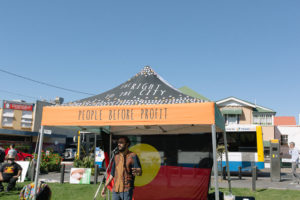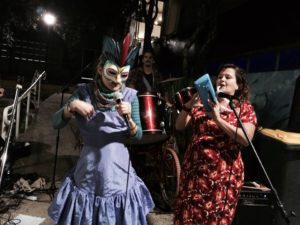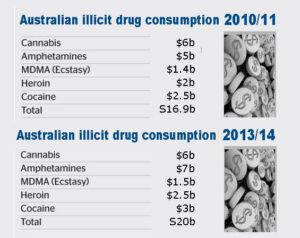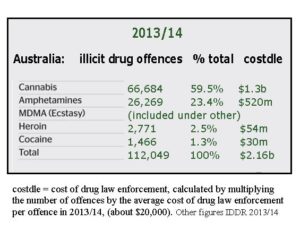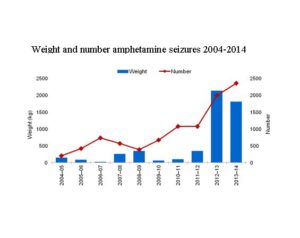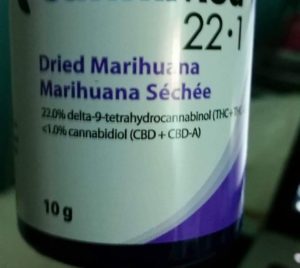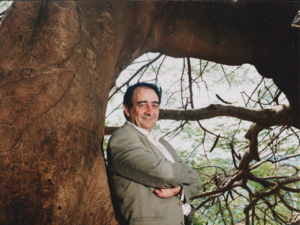When Greens leader Senator Richard Di Natale suggested Australia should adopt Portuguese drug policy and decriminalise all drugs, the Courier Mail denounced his remarks as reeking ‘of juvenile university politics and cheap Thursday night drinks’. Their editorial linked to a News Corp Australia website, which featured a vide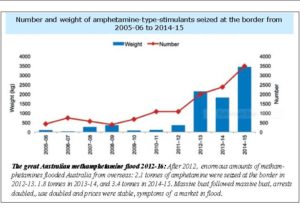 o about the horrors of ice.
o about the horrors of ice.
The video began with the words, ‘epidemic’, ‘scourge’, and ‘emergency’, fading in from a black screen, while a frightening sound track of music and shouting and screaming played. Horrifying stories of ice users followed, amidst even more horrifying images of heavily-armed police raiding a house. It concluded (with more screaming) that ice was everywhere, it was easy to move, and the profits were enormous!
The aim was not to inform, but to terrify. Like their hero, Tony Abbott, the Murdoch press are fear-mongers who love to play on public anxieties. Abbott called ice “the worst drug scourge Australia has ever faced” while his Justice Minister Michael Keenan called ice a “mind-eating drug”. They launched an expensive advertising campaign, Ice destroys lives, which began with a young ice addict slapping down his mother and ended in a hospital emergency scene where another ice user head-butted a nurse, attacked his police guard, and then hurled a chair through a glass partition before going on a hospital-wrecking rampage, while the narrator repeated the campaign slogan, Ice destroys lives. It was fear-mongering on steroids.
Dr David Caldicott, an Emergency Consultant at the Emergency Department of the Calvary Hospital in Canberra, described the campaign as poorly-designed, fear-based advertising. He questioned the considerable expenditure on the ad, which would be dismissed by the people who were consuming meth, who would regard it with disdain as not reflecting reality, while those who didn’t use the drug would be suitably horrified and continue to not use the drug. As an Emergency doctor, he experienced far greater negative consequences from alcohol abuse.
Australia has about two hundred thousand methamphetamine users and only a tiny few act like the addicts in the Ice destroys lives ads. These few need treatment for their addiction, which is generally unavailable because of lack of funding, rather than drug law enforcement.
The war on ice
The war on ice, now into its seventh year, is portrayed as an outstanding success by the media and government. Under this tough-on-drugs, lock-all-users-up approach, Australia has spent billions on law enforcement, while spending very little on treatment, trying to arrest our way out of the problem. The result? Use has doubled. The policy has proved counter-productive because the anti-ice propaganda is dismissed by users, despite its appeal to non-users. Most users are not having problems and when they do, being demonised cuts their support from family and friends, which is unhelpful.
Unlike Portugal, which treats drugs as a health problem and pours its money into treatment, we try to solve the problem with police, with shock tactics, with military-style thinking, believing that we will win the war through shock and awe.
So between 2009/10 and 2013/14, the number of amphetamine-type-stimulants (ATS) arrests in Australia doubled from 13,914 to 26,210. All that police attention should have caused the price to rise, but after an initial spike, the price of ice remained puzzling stable, nonchalantly navigating the crackdown.
Record-breaking seizure followed record-breaking seizure; with every seizure, premiers and police commissioners claimed victory. But no matter how big the seizures were, or how many stunning victories they announced, they never had any effect. The methamphetamine market wasn’t a market any more. It was an unprecedented flood.
Since May 2011 the Australian record for methamphetamine seizure has increased fourfold, going from a then record seizure of 240 kilos that month, to a new record of 306 kilos in July 2012, to a newer record of 585 kilos in November 2012, to the current record ice seizure of 849 kilos in November 2014. All of these were hailed by our leaders and journalists as proof that the war on ice was a great success because the police were taking billions of dollars of drugs off the street.
When the Australian Federal Police (AFP) conducted the first of these enormous seizures on 4 May 2011, it earned breathless praise from Matt Doran, reporting for TEN news, who exhausted his superlatives describing how this massive bust had delivered ‘a monster blow to those who organise the traffic in deadly and illegal drugs’. It was, Doran continued, ‘an extraordinary 240 kilograms of ice with a street value in excess of S50M, the biggest bust in Australian history’. He declared it had ‘dealt a major, major blow to organised crime in Australia’.
But this major, major blow had no effect at all. It was the first small wave of the approaching flood. In 2011, a two-hundred-kilo seizure was extraordinary. Since then they have become almost commonplace.
In the five years since, the market has been in flood and the seizures have been huge because of the unprecedented size of the flood. In the past two years, the police have claimed two seizures with a street value greater than a billion dollars each! Australia’s current record ice seizure in November 2014 was valued at $1.5 billion; another seizure in February 2016 was valued by the police at $1.2 billion. In 2011, Matt Doran called a $50 million seizure ‘a major, major blow’. Five years later, the big seizures are worth over $1 billion!
Since the launch of the war on ice, arrests have doubled, use has doubled, price has remained stable, and Australia has experienced an unprecedented methamphetamine flood. Yet when an intelligent and medically-qualified professional like Dr Richard Di Natale contrasted these outcomes with Portugal’s, the no-nothings of the Courier Mail dismissed him as an undergraduate drunk who was sending the wrong message!
The great methamphetamine flood
What the Drug War warriors won’t admit is that the cause of Australia’s ice flood is the war on ice itself, and the blowback from the police attempt to arrest their way out of the problem.
Before the flood, amphetamine-type stimulants were largely manufactured in Australia. In their 2012 annual report, the International Narcotics Control Board suggested that the recent crackdown on precursor chemicals in Australia caused the price of amphetamine-type stimulants to rise, which has in turn attracted the attention of foreign traffickers, seeking to take advantage of the potential for profits.
The initial police crackdown on home-bake and precursors shifted the balance of the methamphetamine market toward importation, and this seems to be the reason for the record seizures. Since the Australian price for methamphetamine is one of the highest in the world, any shortage caused by local law enforcement will only drive prices higher, making Australia even more attractive to the overseas gangs.
Australia’s methamphetamine market was globalised and outsourced to the global amphetamine industry, the Mexican cartels, the Southeast Asian triads, and the outlaw motor cycle gangs of Canada and the US, who found the Australian ice market very attractive. The great Australian methamphetamine flood rolled in.
Our policies criminalise all drug use, when our aim should be to treat drug abuse. While 90% of Australia’s illicit drug budget goes into law-enforcement, the Portuguese turned this on its head by decriminalising and diverting the money going to police into health and treating drug addiction as a health problem. Arresting your way out of the problem hasn’t worked.
Dr John Jiggens

